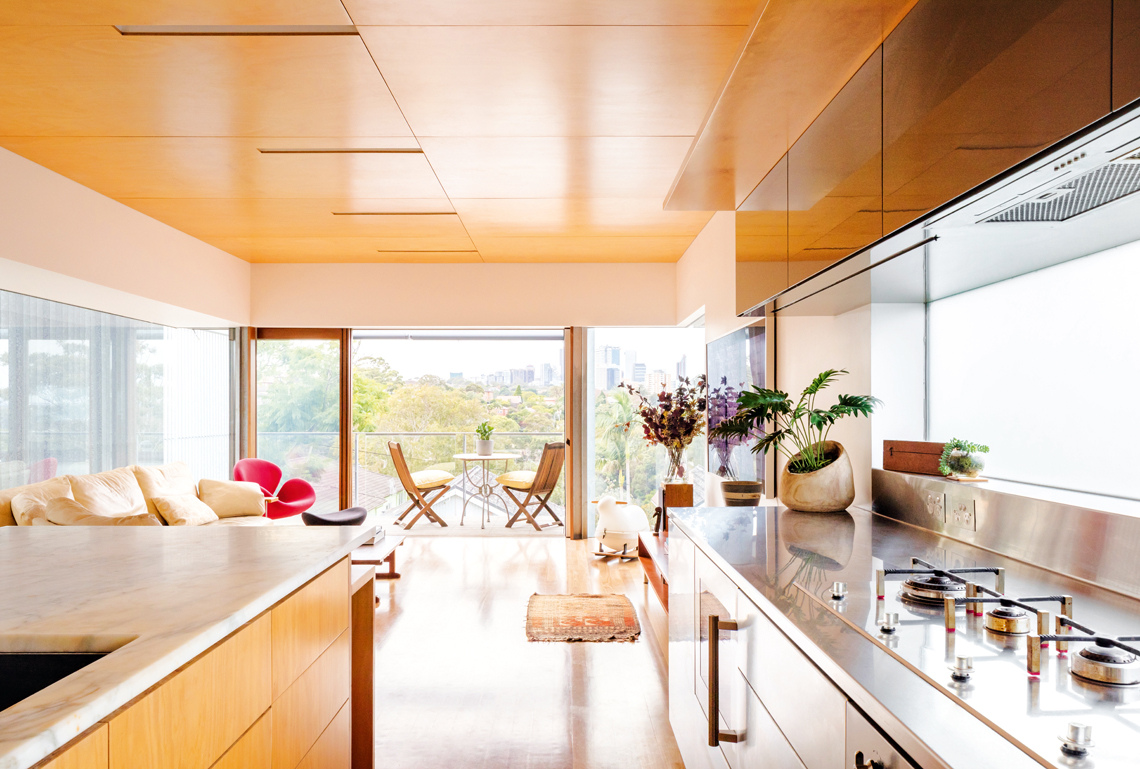After spending years searching for the “perfect” spot for his young family, Dion Weston discovered a 1904/05 Edwardian timber cottage in Greenwich, a suburb on Sydney’s lower north shore. Despite its dilapidated condition, Dion saw potential in the heritage-listed deceased estate. The property offered sweeping views of Sydney’s CBD, including the Sydney Harbour Bridge, which could be enhanced with a second-storey addition. To retain and respect the cottage while also creating a long-term family home, Dion collaborated with architect Brian Zulaikha from Tonkin Zulaikha Greer Architects. Together, they envisioned the restored Greenwich House sitting alongside a modern, sculptural addition, both connected by an enclosed ramp structure and a 19.5m-long pool.
“We progressed with the build without proceeding to a 1:20 detailed drawing set, instead relying on the Construction Certificate 1:100 approved drawing set, with the detail being worked up from Peter’s (technical project manager) on-site sketching in collaboration with Brian’s and my own extensive input,” explains Dion. “This approach worked well, providing a significant degree of ongoing design flexibility, while at the same time ensuring problems in execution were well anticipated, as were cost management consequences. The downside was the fatigue generated by the relentlessness of the decision making required.”

Restoring the Edwardian cottage was a priority for Dion and his wife, Turi, so they preserved most of the original structure while fully renovating it. The standout addition is a 19.5m-long lap pool with lime-green tiles. Positioned centrally on the block, the pool is flanked by two pavilions, each built on either side of its rear, behind the remaining cottage. On the ground floor, various split levels feature three bedrooms and a multi-purpose room, all accessible through a “glass-shrouded glass bridge.” Moreover, Greenwich House retains two bedrooms, and the original living room now functions as a guest bathroom and living area. Additionally, the coal fireplace has been restored, made fully functional, and enhanced with a contemporary surround. Finally, the coloured-glass panelled door that once separated the original hallway and sitting room now leads to the new bathroom.
Dion explains, “We reinstated the original facade of the cottage with great respect, following an extraordinarily high-resolution circa 1910-1920 Chisholm Street streetscape photograph we found in the Lane Cove Library’s historical records.”

An important part of this build for Dion and Turi was capturing Sydney’s skyline views from a second-storey addition. Consequently, they created a house-length rooftop deck that rivals many of the city’s counterparts. The space includes a lounge area, barbecue, and outdoor kitchen, providing sweeping, uninterrupted views. To the east, you can see the Sydney CBD, while to the west, the distant ridges of the Blue Mountains stretch across the horizon.

Greenwich House embraces a “less is more” design philosophy, drawing inspiration from Mies van der Rohe and the Japanese concept of wabi-sabi. Natural materials, such as glass, timber, and galvanised steel, enhance the space, while unobstructed sight lines and a sense of structural lightness define its aesthetic. Additionally, the pool and Japanese-inspired garden, featuring stepping stones and a lily pond, seamlessly integrate nature with the building’s architecture.
“The theatricality of the structure, and the risks taken with form, while simultaneously delivering spectacular views, exceptional sight lines and amazing living spaces, are special … it is an exciting building, one that often stops passers-by in their tracks, compelling them to take time to stand and contemplate its uniqueness,” says Dion.










